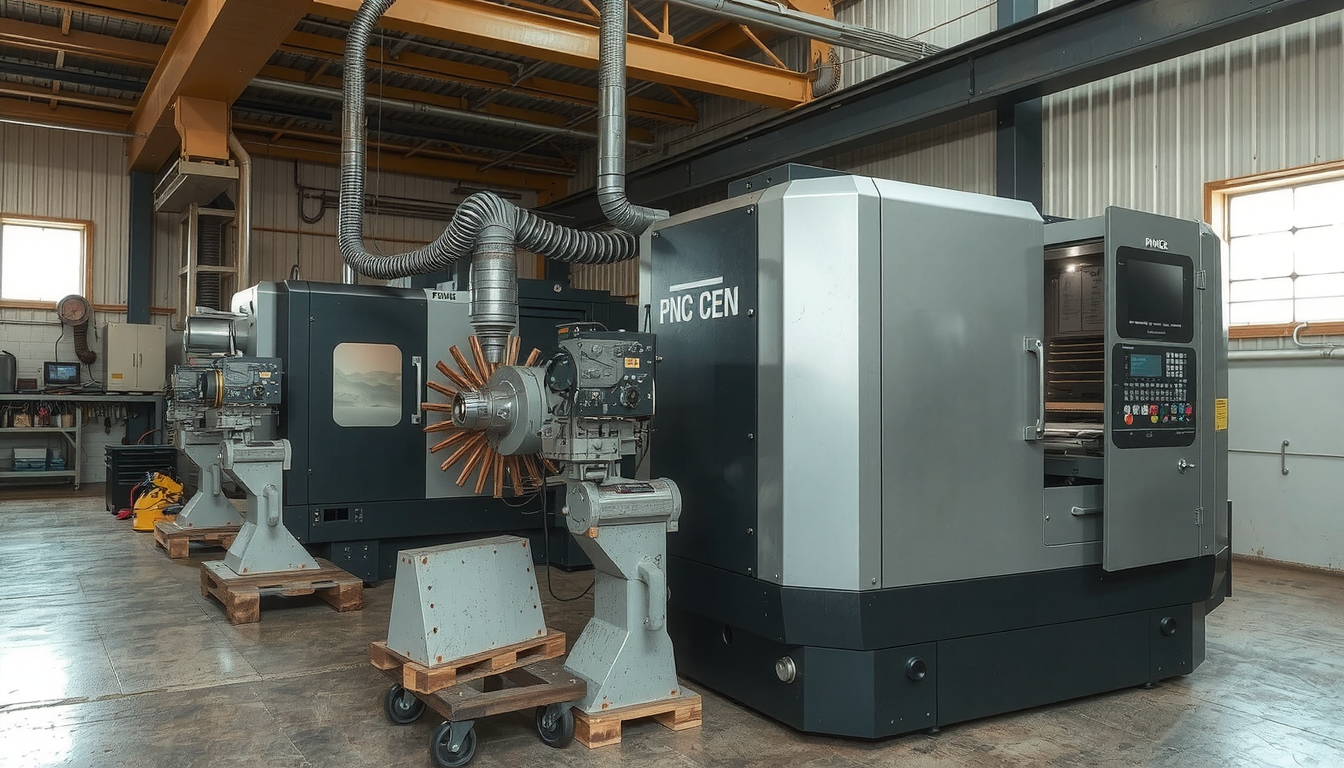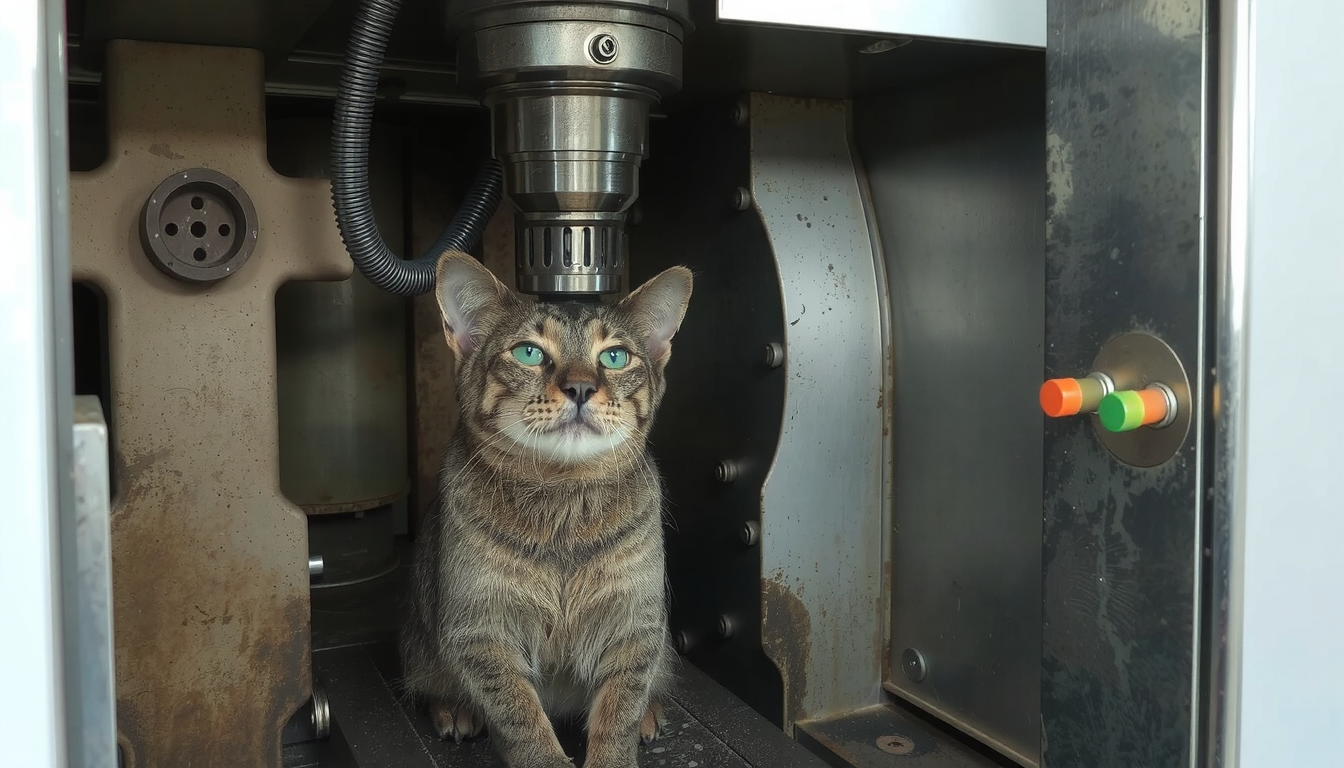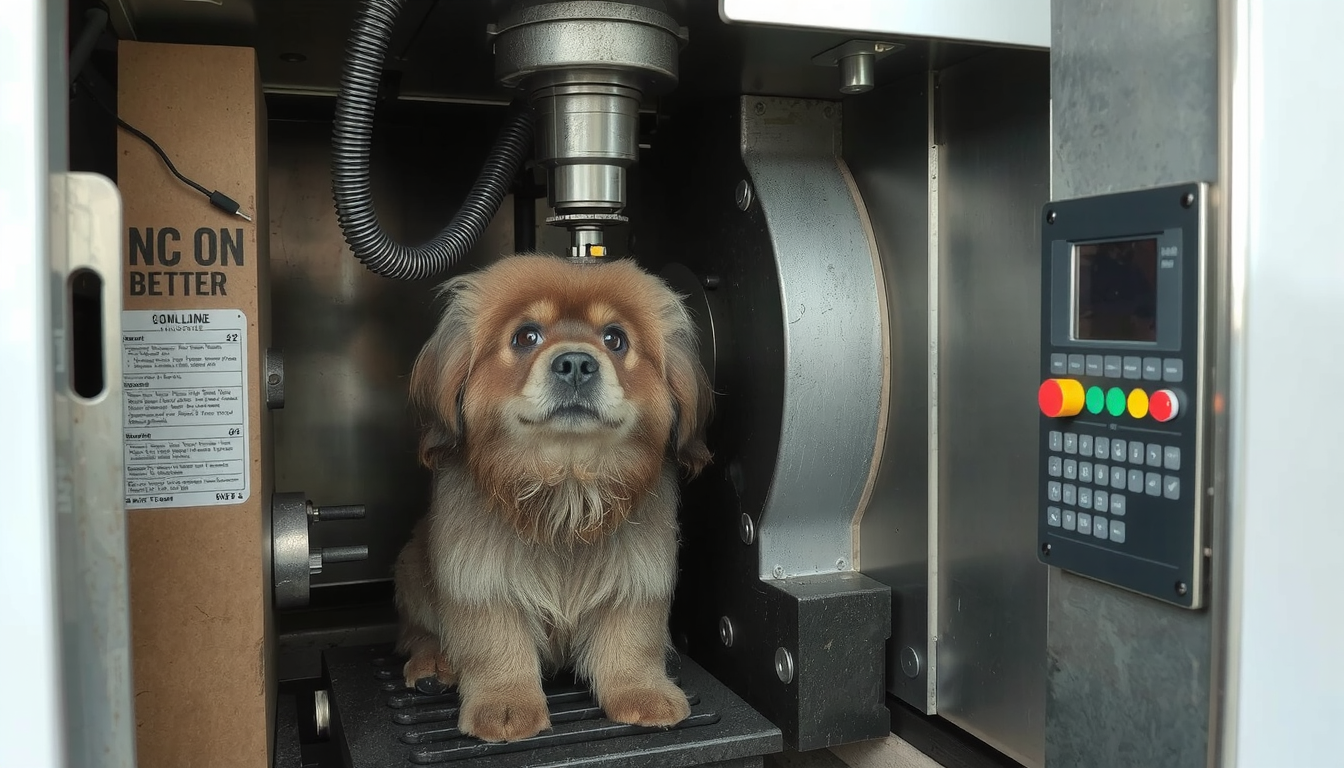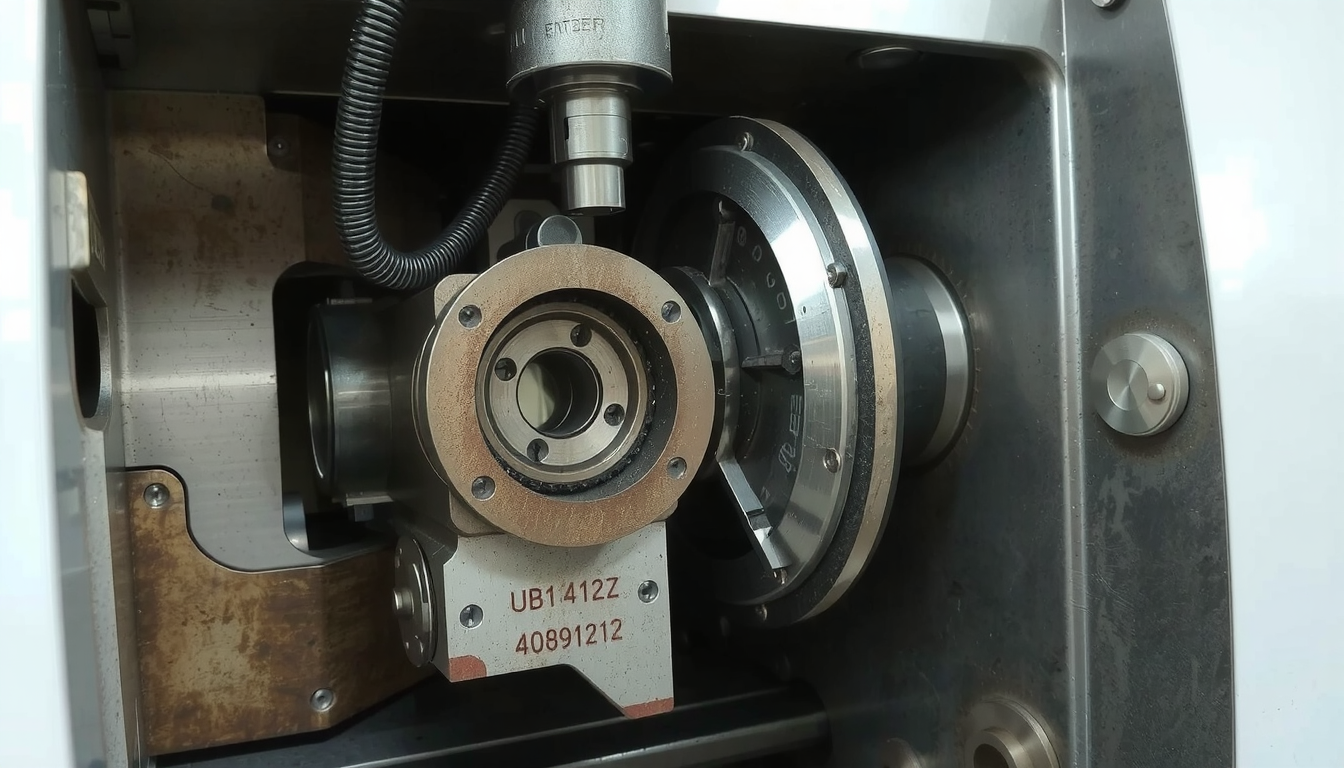When starting a new project, the most common question that arises is whether it is better to use a CNC lathe or a CNC milling machine. The true answer does not depend on the preference of machines; the correct reply is a matter of the right machine for a certain part that one needs to create.

Deciding to go with either a CNC lathe or a mill is a question of a single primary view. A lathe allows the part to rotate while the tool remains stationary, whereas, in a mill, it is the other way round.
This guide is designed to assist you with that entire process. We will explore the working mechanism, the tools can make, and the comparison. You will leave having the ability to select one between CNC lathe and CNC milling with confidence.
Understanding the CNC Lathe
In order to choose between a CNC lathe and a CNC mill, you first need to know what each of these machines are. Let’s firstly look at the CNC lathe. This is also often referred to as a turning machine.
The Principle of Turning
A CNC lathe works by holding a piece of material in a chuck. This could be metal or plastic. The chuck then spins the material at a very high speed.
A cutting tool is placed on the machine and it moves along the spinning part on two axes. These are X (in and out) and Z (left and right). The tool shaves away material, and this process is known as turning.
Just like a potter’s wheel. The clay wheel is spinning. The potter uses his or her hands to influence the shape until round. The CNC lathe uses the same principles. However, it is more precise and can work with materials that are harder than clay.
What Parts Do Lathes Make?
CNC lathes do a great job of producing parts that are round or cone-shaped. Whenever a part’s geometry is round and it has a central axis, a lathe is almost always the preferred option.
The list of some of the parts that are commonly made on a CNC lathe consists of the following ones:
* Shafts and axles
* Screws, bolts, and nuts
* Custom bushings and spacers
* Knobs and handles
* Flanges and rings
Nuestra Servicios de torneado CNC are specialized in manufacturing these high-precision round parts in a wide range of industries.
Key Features of CNC Turning
The process of turning removes material. This means it takes away material from a larger piece to create the final shape. This technique is recommended for objects with cylindrical symmetry.
The main tools are usually single-point cutters, which are applied in most of the basic lathes that work on two axes (X and Z).
More advanced machines are also available. A CNC Turning Center is a more complex version of a lathe. This type of lathe can be a more advanced version that has live tooling for drilling or milling features, more tool options, and extra axes of motion.
Understanding the CNC Mill
Now, let us examine the CNC mill in the context of the CNC lathe vs. mill debate. A CNC mill works in the inverse way to a lathe.
The Principle of Milling

In CNC milling, the workpiece is firmly fastened to a table. The cutting tool is fitted with several cutting edges. It’s held in a spindle and rotates at a very high speed.
The machine moves either the table or the spindle along multiple axes. This guides the spinning tool across the material. This carves away material from it to create the desired shape.
A good analogy is carving a block of wood. The wood remains stable while you use various tools to cut, shape, and hollow it out from different angles. CNC milling works the same and performs this process automatically at a very high level of accuracy.
What Parts Do Mills Make?
CNC mills have wider applications. They are utilized in making parts that have flat surfaces, complex curves, pockets, and holes which are not on a central axis.
Some common parts that a CNC mill can make include:
* Engine blocks and manifolds
* Enclosures and housings
* Gears and brackets
* Molds and dies
* Parts with complex pockets, holes, and slots
When the geometry of the part is a flat block rather than a cylindrical rod, a CNC mill is in most cases the ideal tool. An often-disputed subject like whether CNC lathe is better than CNC milling can often be resolved through a simple analysis of a part’s shape.
Key Features of CNC Milling
Milling, a process of removing material, is a quite flexible technique. It suits best for parts that are not symmetrical.
It uses many different spinning tools. They include end mills, face mills, and drill bits.
The basic mills come with three axes (X, Y, and Z). For more advanced ones, there are 4-axis and 5-axis mills that can tilt the part or the tool head. As a result, they are capable of creating very elaborate shapes in just one operation.
A Head-to-Head Comparison
We have discussed the general mechanism of the CNC lathe and the CNC mill. It is now the right time to make a direct comparison. It is much easier to decide which machine is suitable for your project when you see their differences side by side.
This table provides a quick reference for the CNC lathe vs. mill question.
| Característica | CNC Lathe (Turning) | Fresado CNC |
|---|---|---|
| Core Motion | Workpiece rotates, tool is stationary. | Tool rotates, workpiece is stationary. |
| Best for Part Geometry | Cylindrical, conical, round parts. | Prismatic, flat surfaces, complex curves. |
| Typical Products | Shafts, screws, pins, tubes. | Brackets, enclosures, molds, engine parts. |
| Axes of Control | Typically 2-axis (X, Z). | 3, 4, or 5-axis (X, Y, Z + rotational). |
| Complejidad de la instalación | Generally simpler and faster for basic parts. | Can be more complex due to workholding. |
| Cost Per Part | Often lower for high-volume cylindrical parts. | Can be more cost-effective for complex, one-off parts. |
| Acabado superficial | Excellent concentric finish on round parts. | Can create very fine flat or contoured finishes. |
Recognizing these key differences between these manufacturing processes is very important in the process of learning how to choose the right technology. Both methods have their strengths. Therefore, the best choice will always depend on the design of the specific part you are working on.
How to Choose: A Practical Framework
The choice between a CNC lathe versus the CNC milling machine does not have to be difficult. Just ask yourself four simple and basic questions about your part that will get you to the correct answer.
1. What is the Core Shape?

You should examine the part’s overall shape. Is its core round or square?
If the part is mainly round, tube, or cone-shaped, the CNC lathe should be the starting point. Think of parts like a baseball bat, a pin, or a wheel.
On the other hand, a CNC mill is the best choice if the part has flat faces, square edges, or blocky parts. Associated parts could be a phone case, an engine block, or a custom bracket. Remember this simple and effective rule: rod vs. block.
2. What Features Do You Need?
Next, it is time to focus on the desired details of the part.
Does the part need features like threads, grooves, or a taper on a round surface? A lathe creates these features very well as the part spins.
Does the part need off-center holes, slots, or text carved on a flat surface? A CNC mill is then needed to move a tool to these desired areas.
3. What is Your Volume and Budget?
In our experience, the questions of how many parts you need and what your budget is are essential. The decision-making process could favor the CNC lathe or the mill depending on the costs.
For making many simple round parts, like 1,000 custom spacers, a CNC lathe is very fast and cost-effective. The setup is quick, and the time per part is very low.
On the other hand, for a one-off, complex prototype with many unique features, a CNC mill would be perfect. The setup may take longer, but its ability to create almost any shape makes it worth the time.
4. Does the Part Require Both?
Many of the parts these days are more complex. One may encounter a situation where a part would be round, but it would also incorporate features a lathe cannot produce.
A custom bolt can serve as a good example. It has a round shaft with threads, which is a lathe job. But what if it also needs a head shaped like a hexagon or a slot cut on the top? These are milling operations.
These cases may require both processes. The part might be turned on a lathe first and then moved to a mill for the final features. Alternatively, the part can be produced using a sophisticated mill-turn machine, which combines the two processes in one operation.
Real-World Scenarios in Action
To clearly illustrate the decision between a CNC lathe or mill, let us consider two different projects. In our machine shop, we run into cases like these often. Below are the ways we would tackle them.
Case Study 1: Brass Hose Fitting
Envision a customer seeking a unique brass coupling for a water hose. The part is equipped with threads on one end, a tapering nozzle on the other, and a hole drilled through the center.

In this case, the choice is obvious: a CNC Lathe.
The explanation is easy. The entire part is based on a central axis of rotation. The threads, the taper, and the center hole can all be created while the part spins. A lathe can make this part quickly, accurately, and at a very low cost per piece.
Case Study 2: Aluminum Mounting Bracket
To illustrate a different scenario, let us say that another customer needs a prototypical aluminum bracket to mount a sensor. The bracket has a flat base, two arms at a right angle, and several holes with larger areas for screws. It also has a large pocket cut out to save weight.
The choice is a CNC Mill.
This part’s geometry is more of a block. A lathe cannot create flat surfaces, right-angle features, or pockets. A CNC mill is needed to move a cutting tool across the X, Y, and Z axes to machine the base, cut the pocket, and precisely drill the holes.
Pros and Cons of Each Process
Besides geometry, there are other aspects that need to be considered when choosing between a CNC lathe and a mill. Knowing their pros and cons can help with project planning and budgeting.
CNC Turning (Lathe) Pros and Cons
Advantages:
* Lower cost per part for making many round parts.
* Faster and simpler setup for basic round jobs.
* Creates a great, smooth finish on round surfaces.
Disadvantages:
* Limited to parts with the same shape around an axis.
* Not suitable for complex, non-symmetrical prototyping.
CNC Milling Pros and Cons
Advantages:
* Great versatility for complex and freeform shapes.
* Can produce almost any shape you can design.
* Ideal for prototypes and parts with flat faces or pockets.
Disadvantages:
* The initial cost of the machine is often higher, especially for 5-axis models.
* Can create more material waste since it often starts with a solid block.
* Setup can be more complex and time-consuming.
These points are part of a wider analysis of The Pros and Cons of CNC Machining that every engineer and project manager should consider.
Conclusion: The Right Machine for the Job
So, which is better, CNC lathe or CNC milling? The answer is clear: it depends entirely on your part. This debate does not have a winner; it just has the right tool for the job.
The fundamental principle is simple. Lathes are for round parts, while mills are for the rest.
By employing a four-question framework to assess the shape, features, volume, and complexity, you can decisively choose the best route for your project. This ensures you get your parts made accurately, efficiently, and within budget.
For expert advice on your specific project or to explore a full range of manufacturing solutions, visit us at Mekalite. We are here to help bring your designs to life.
Frequently Asked Questions (FAQ)
1. Can a CNC mill make round parts?
Yes, a CNC mill has the capability of creating round features or even fully round parts. It does this using a process called circular interpolation or by using a 4th-axis rotary attachment. But for a part that is mainly round, a CNC lathe is much faster and more cost-effective.
2. Is a CNC lathe or mill more expensive?
Generally, a basic 2-axis CNC lathe costs less than a basic 3-axis CNC mill. However, prices vary greatly depending on the machine’s size, brand, and features. Advanced multi-axis machines, like 5-axis mills or mill-turn centers, command a higher cost than the basic models.
3. Which is easier to learn, CNC lathe or CNC milling?
Basic 2-axis lathe programming is often seen as slightly easier to learn. This is because there are fewer axes and variables to manage. However, mastering either machine requires a strong understanding of G-code, tooling, materials, and safety principles.
4. What is a “mill-turn” machine?
A mill-turn center is a hybrid machine. It combines the functions of both a CNC lathe and a CNC mill into one platform. It can turn a spinning part and also use spinning tools to mill features, all in one setup. This makes it perfect for very complex parts that need both types of operations.
5. For a home workshop, should I buy a lathe or a mill first?
This depends entirely on what you want to make. If your projects involve making pens, knobs, shafts, or other round items, a lathe is the right choice. If you want to make custom brackets, enclosures, or engrave flat surfaces, a mill offers more versatility for a wider range of general projects.

